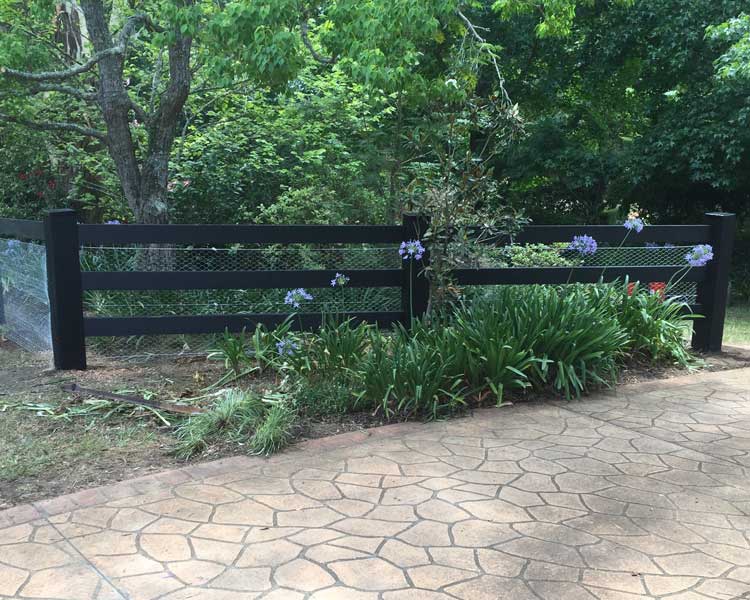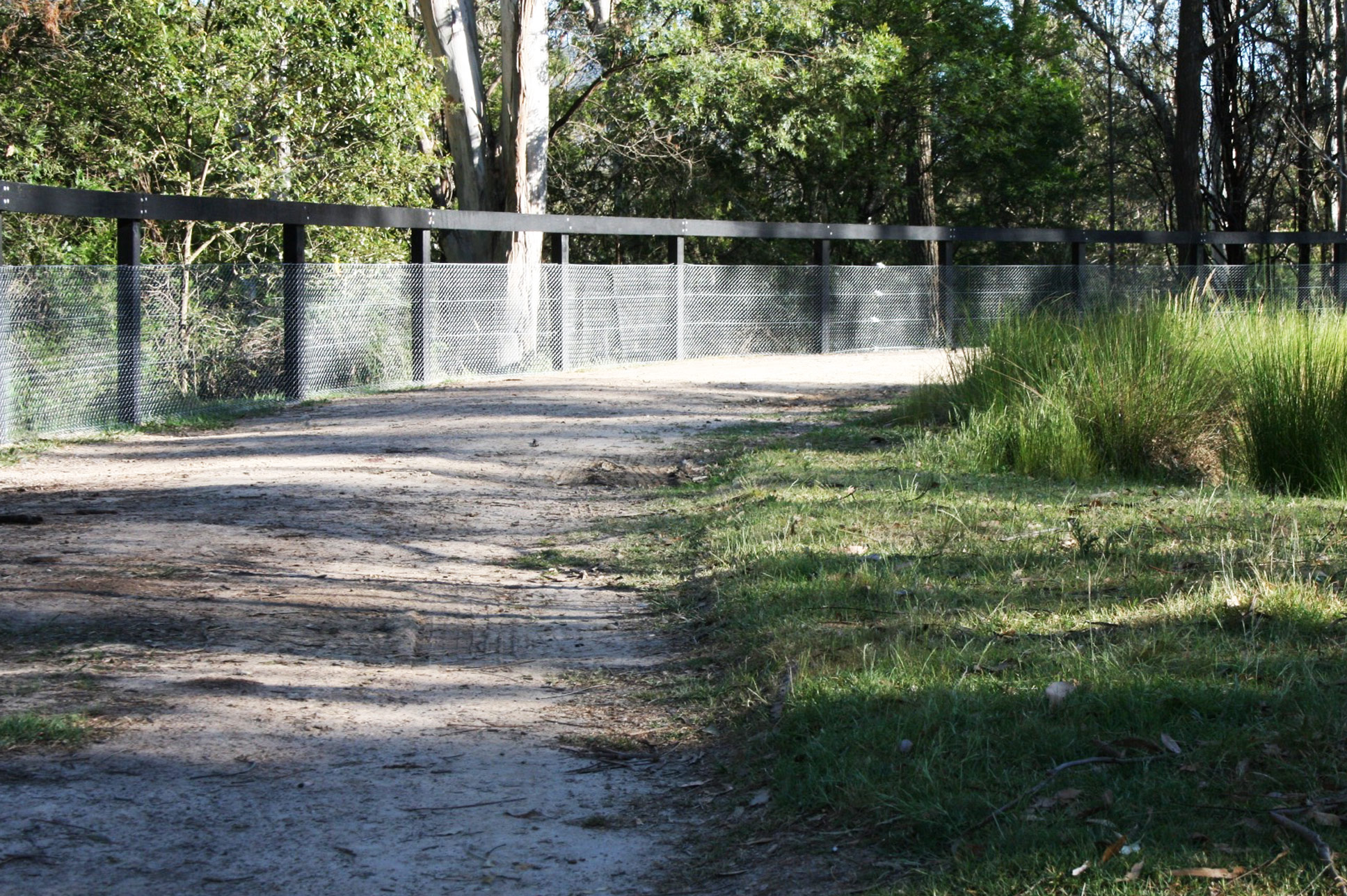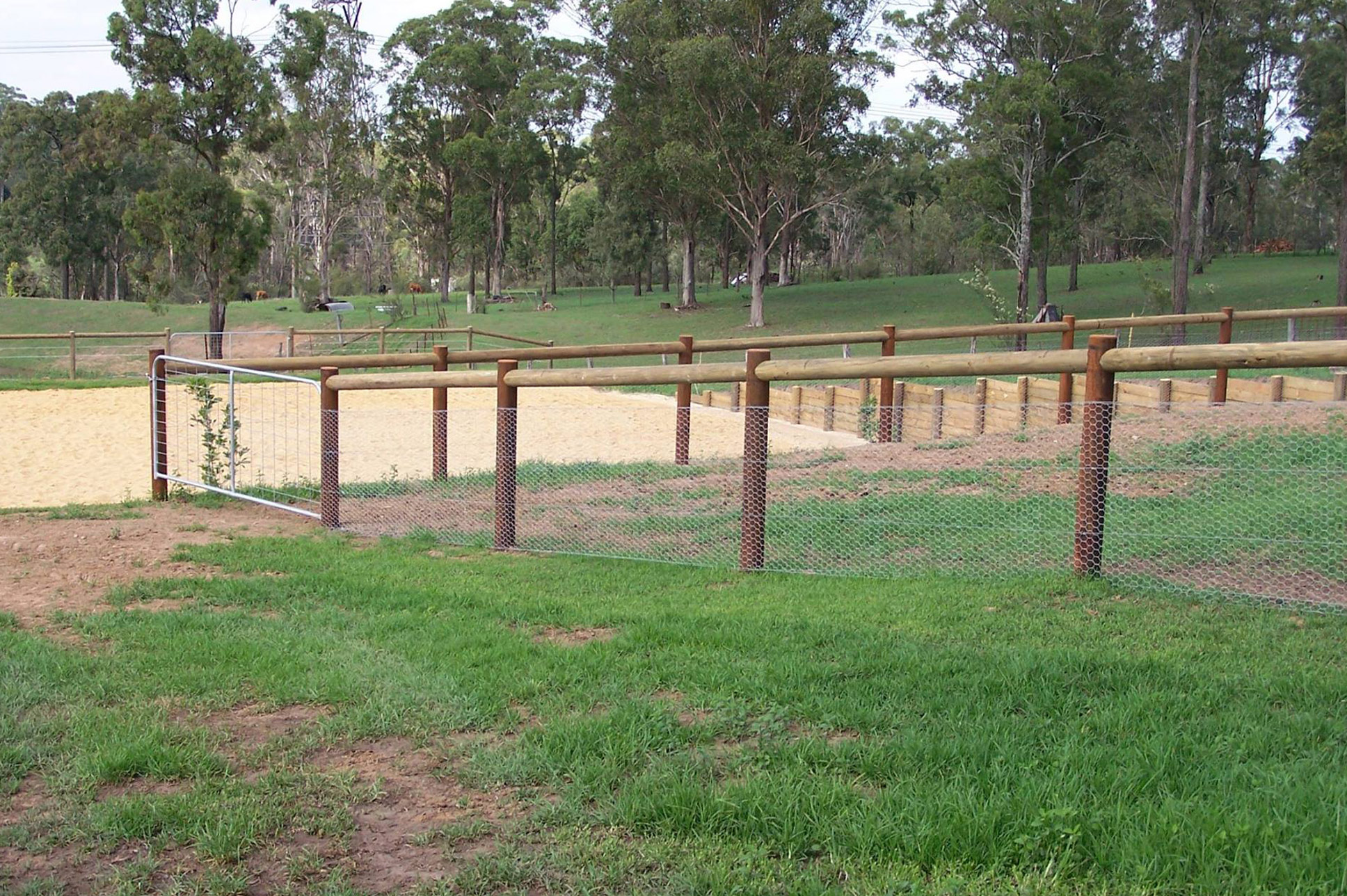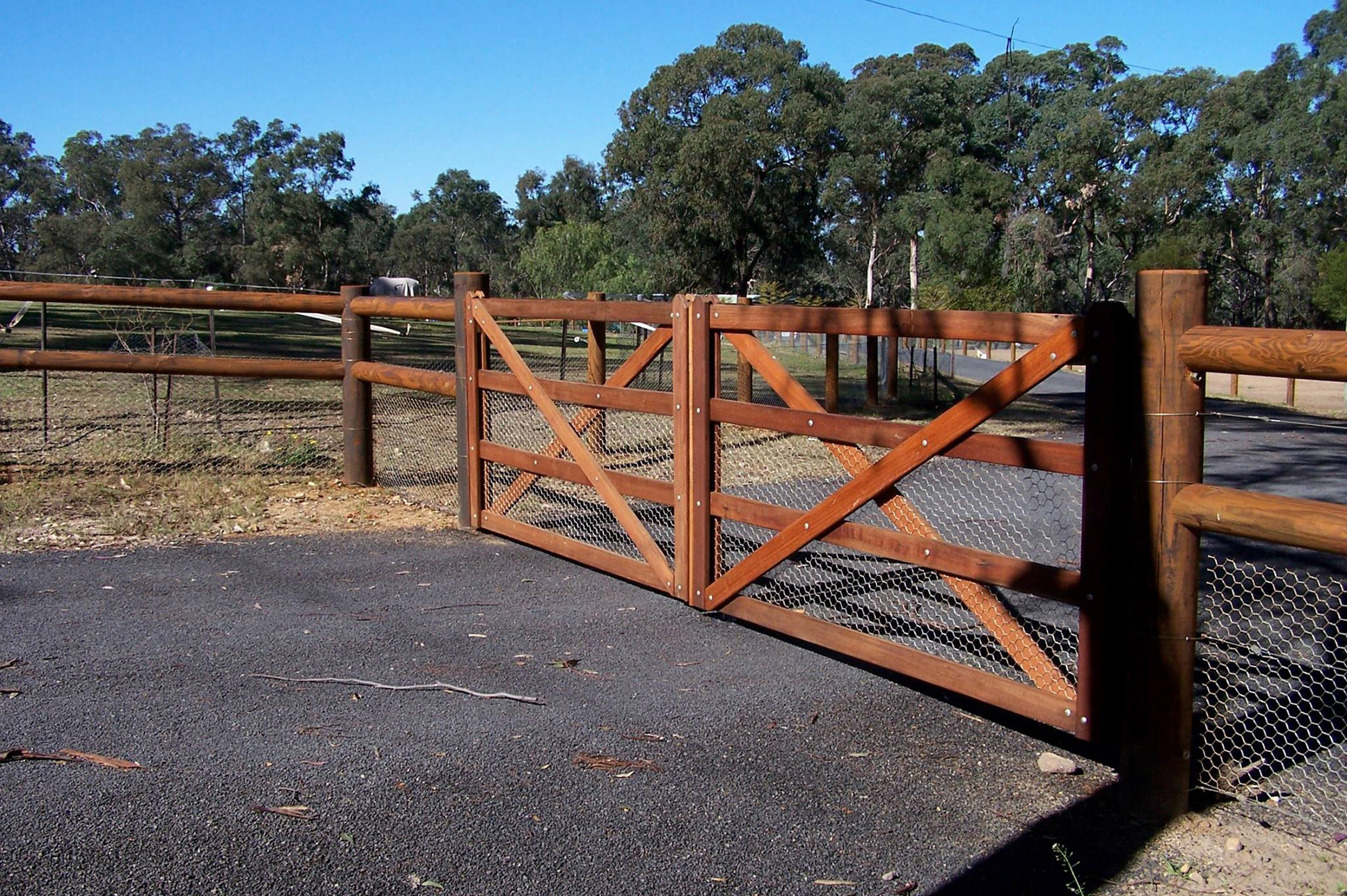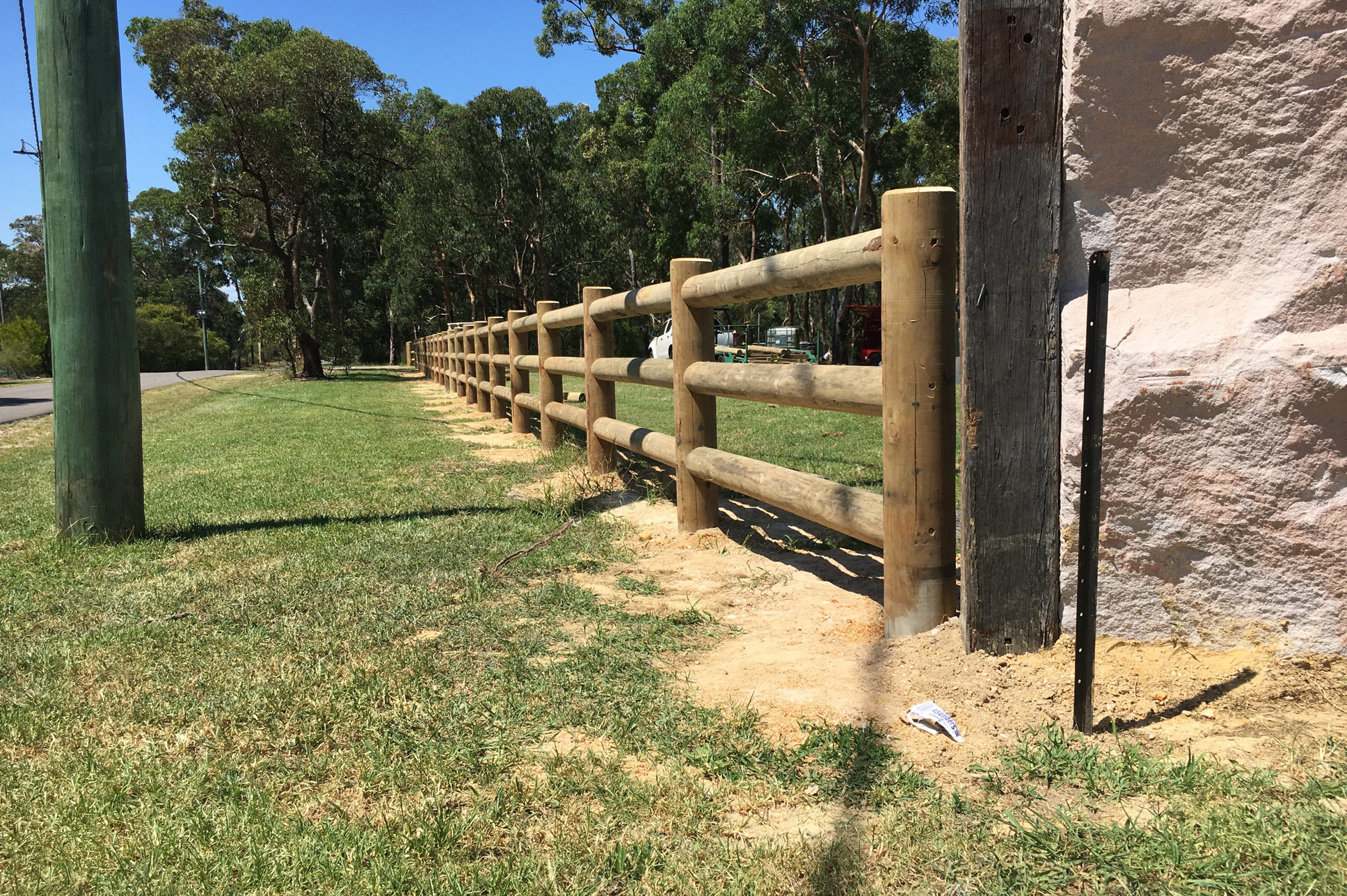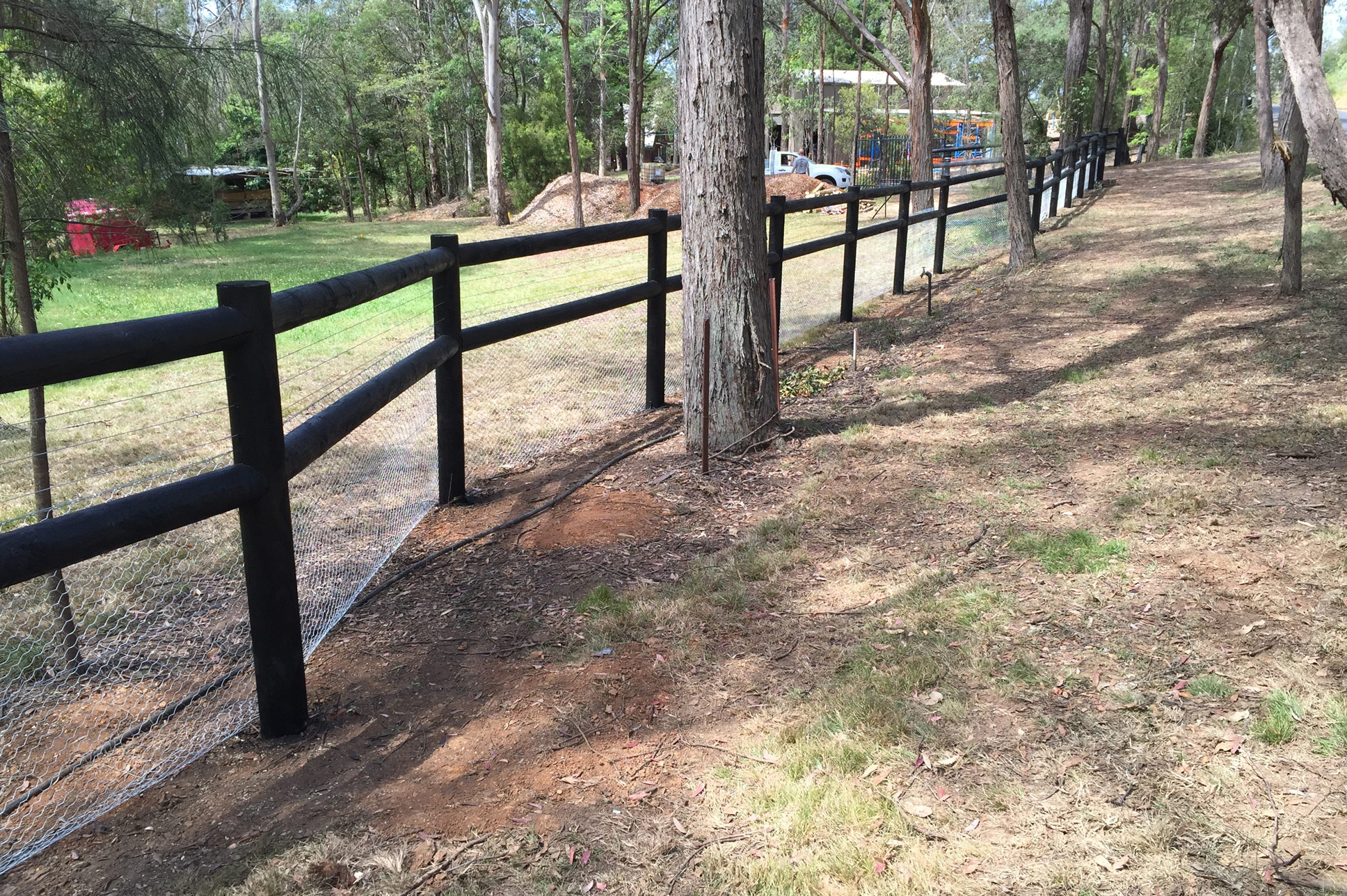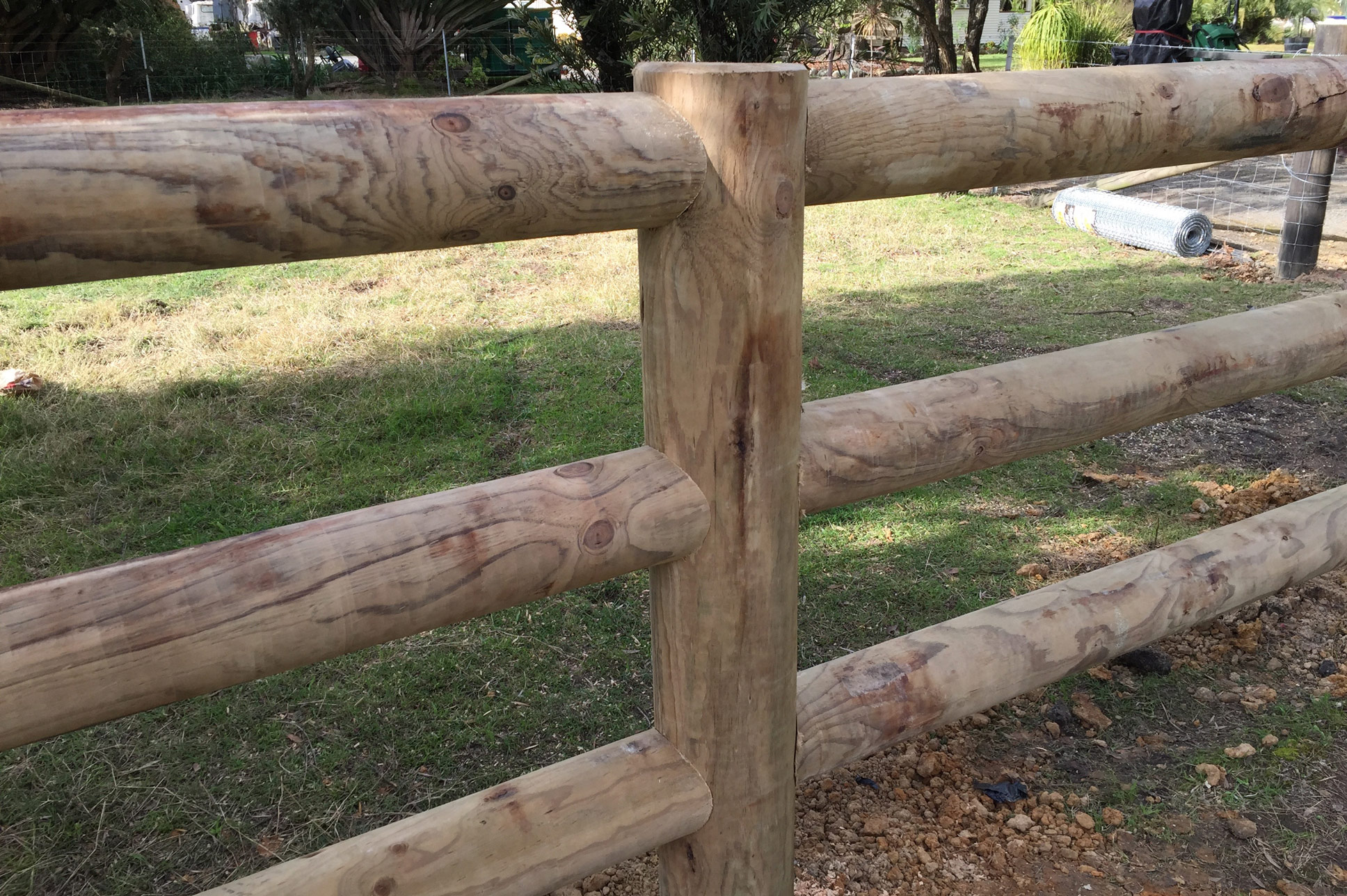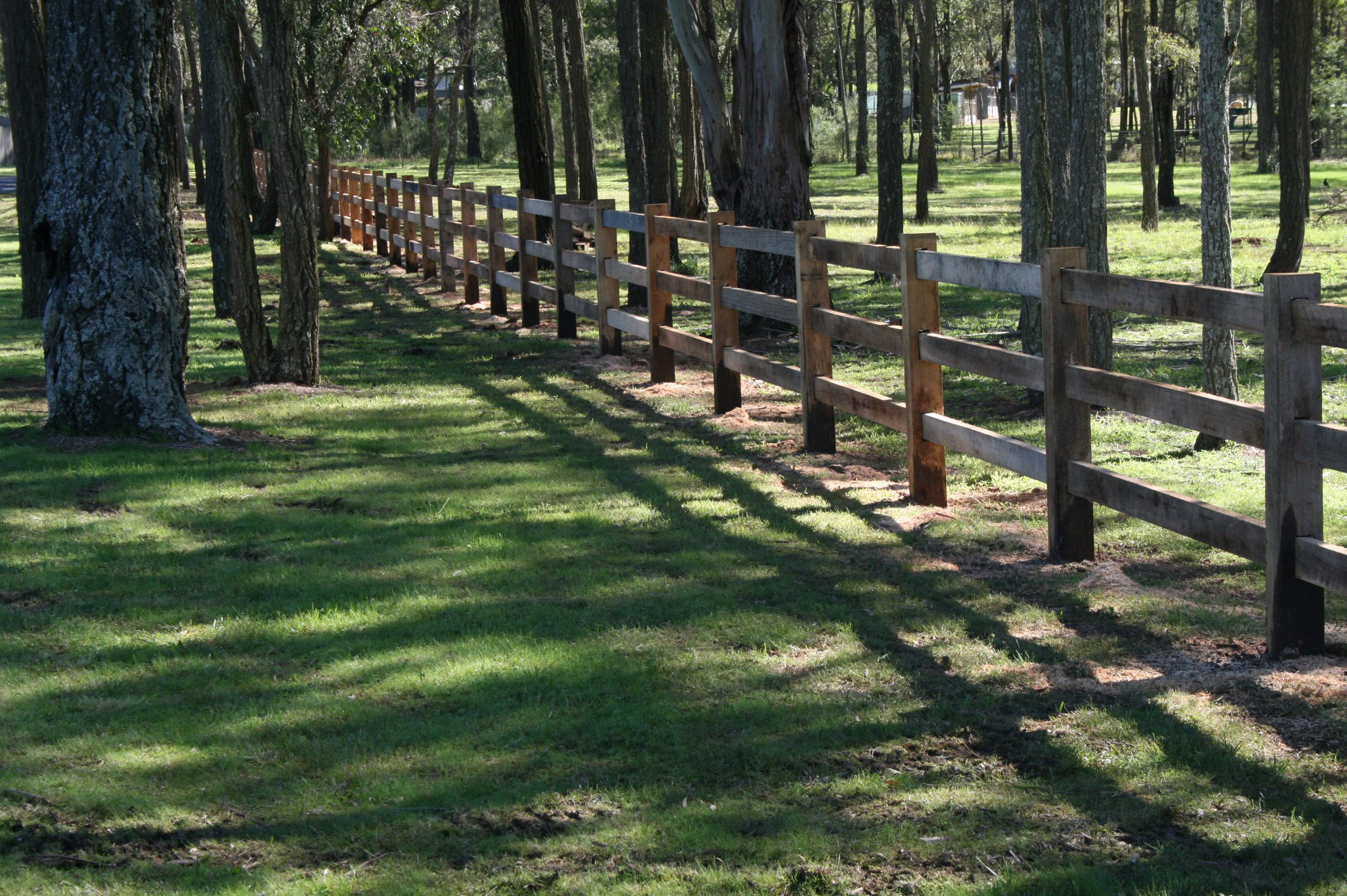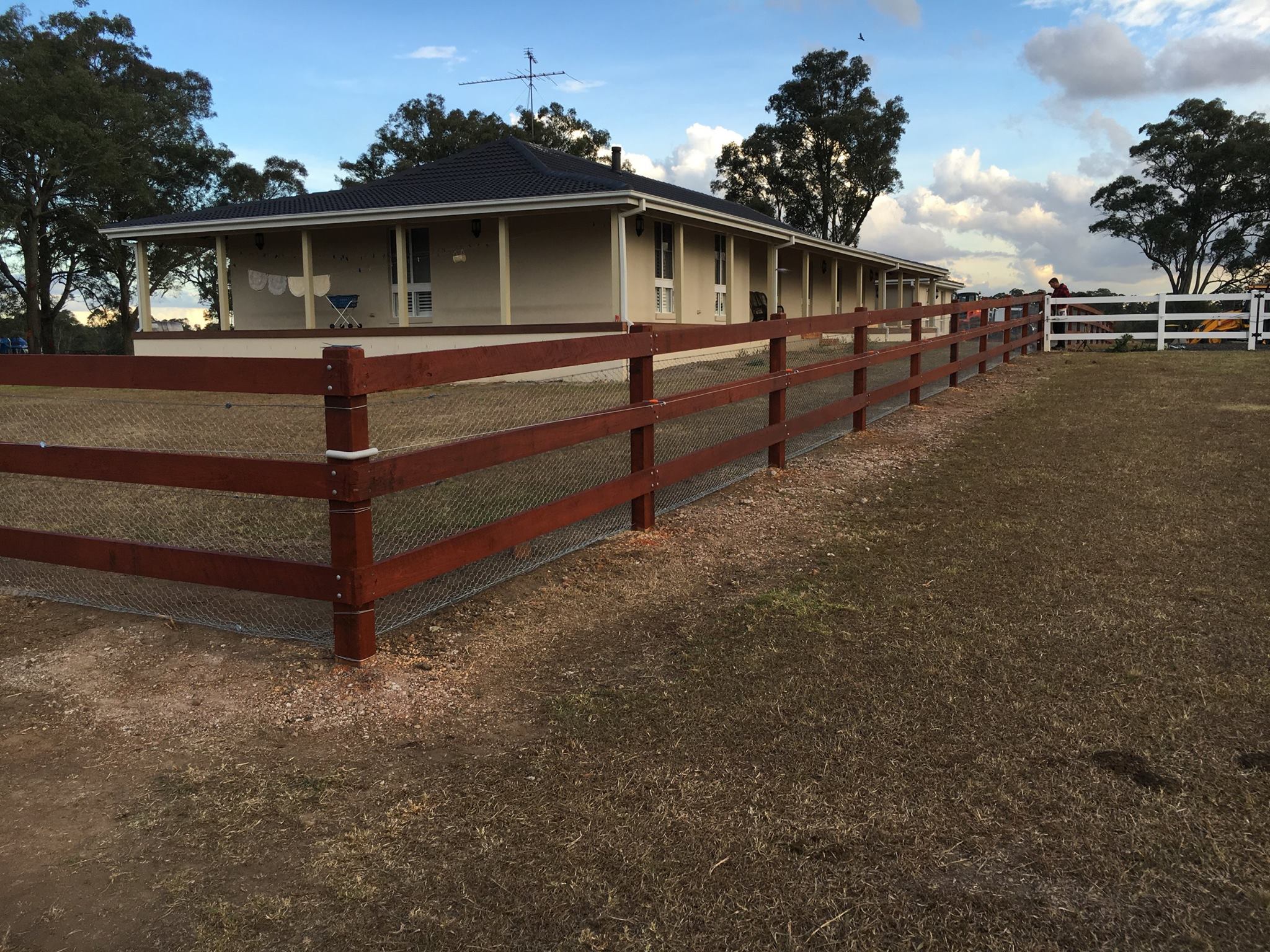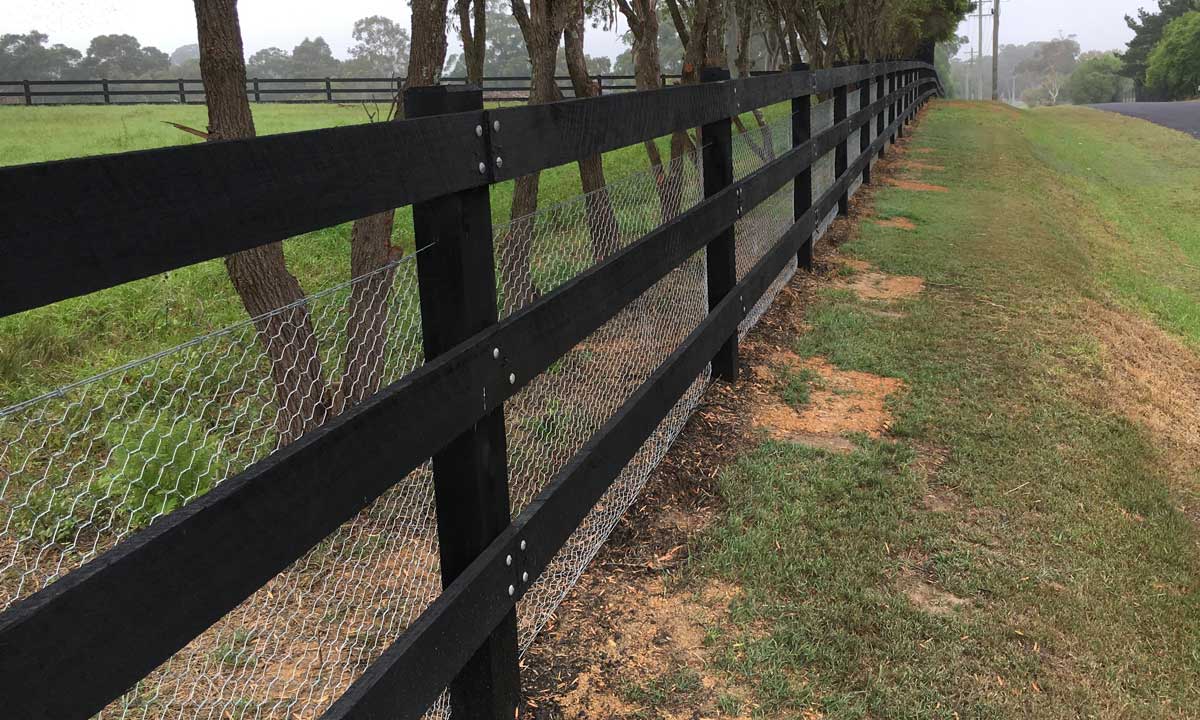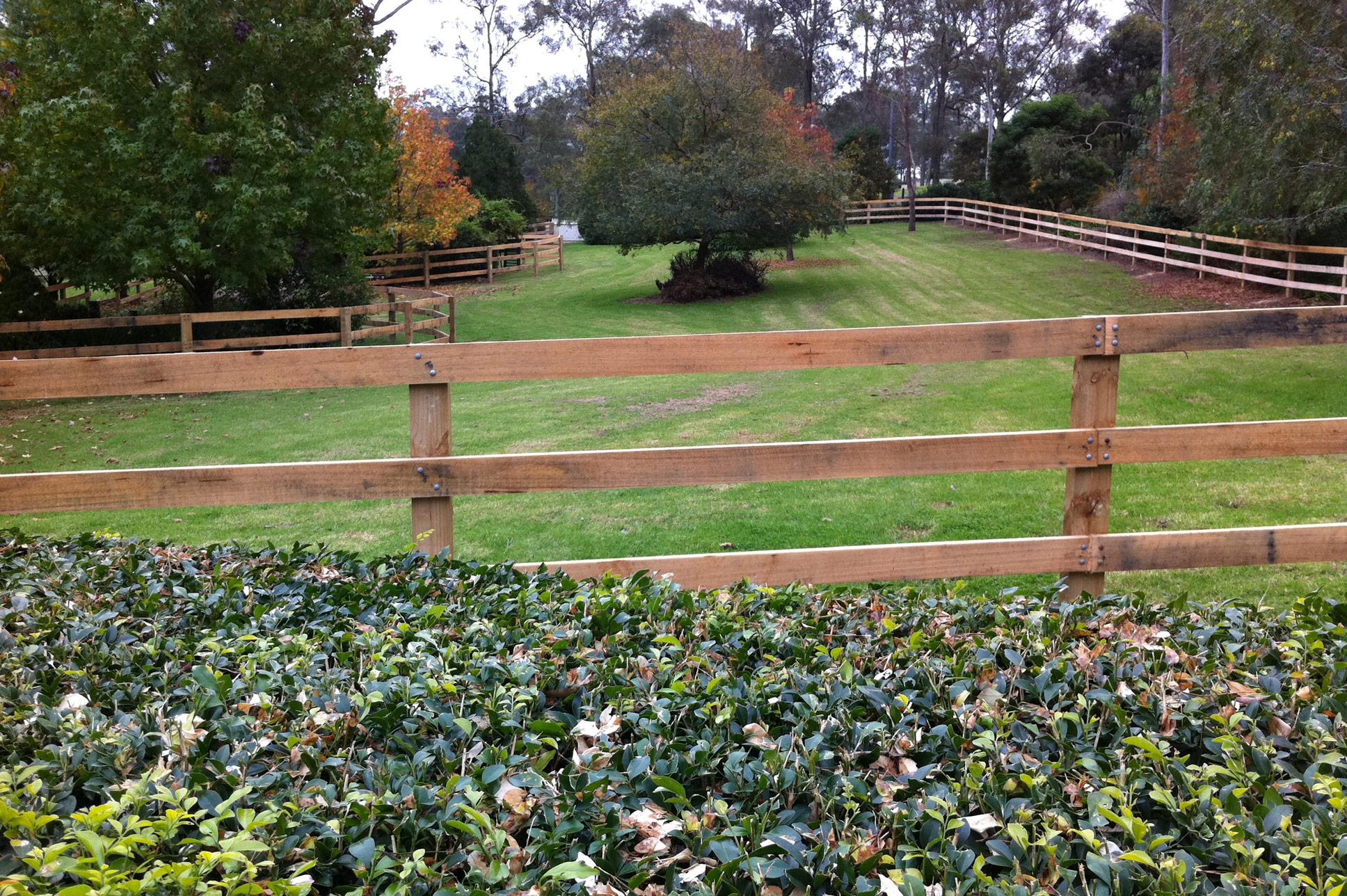What is Post and Rail Fencing?
Post and rail fencing is a type of fencing that uses horizontal rails attached to vertical posts. It's a traditional and straightforward fencing style that's commonly used for agricultural, livestock, and boundary fences for rural and semi rural properties or those that are containing livestock such as horses.
How deep should a post and rail fence be?
Posts should be set between 800-900mm in the ground for a fence with pressure from stock. Typically, that means that ⅓ of the fence post is in the ground and ⅔ of the post is above ground. So, on a standard 2.4m post, 900mm in the ground would leave 1.5m out of the ground, the post is then trimmed to the desired height.
Do you concrete post and rail fencing?
Generally, posts are set apart 3m, this ensures the fence's stability and also reduces wastage of the rails as they are normally 3m - 6m in length.
How long does a post and rail fencing last?
The lifespan of timber post and rail fencing is extensive in optimal conditions. Things such as a buildup of debris around posts and if you have a rail close to the ground will reduce the overall lifespan of the fence.
Do fence rails go between posts or on posts?
With traditional post and rail fencing, the rails are bolted onto the posts, with the rails butting up to each other at the center of the post in the ground. When the fence rails go between the posts, it is known as Morticed, where the posts are notched out to allow the rails to sit in the notched-out area of the post.
What is the best way to attach fence rails to posts?
The best way to attach a fence rail to a post is by using strong countersunk bolts with a washer as they have to be able to hold up the weight of the rail.
How high should a post and rail fence be?
Generally, 1350 to 1450 to the top rail of the fence is a standard height for post and rail fences. If however, you are fencing for a specific purpose the height could change to suit.
